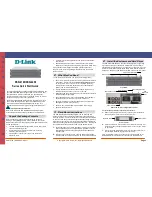
73
4.2.5.1 Portal Managem ent
The NAS supports a built-in iSCSI (Internet Small Computer System Interface) service
for server clustering and virtualized environments.
Topics covered in this chapter:
iSCSI Quick Configuration Wizard
M a nua l iSC SI C onfigura tion
The NAS supports built-in iSCSI service. To use this function, follow the steps below:
1. Install an iSCSI initiator on the computer (Windows PC, Mac, or Linux).
2. Enable iSCSI Target Service on the NAS and create an iSCSI target.
3. Run the iSCSI initiator and connect to the iSCSI target (NAS).
4. After logging in, format the iSCSI target (disk volume.) You can start using the disk
volume on the NAS as a virtual drive on the computer.
When referring to your computer and the storage device, the computer is called an
initiator because it initiates the connection to the device, which is called a target.
Note :
It is NOT recommended to connect to the same iSCSI target with two
different clients (iSCSI initiators) at the same time, as it may lead to data loss or
disk damage.
iSC SI Q uic k C onfigura tion Wiza rd
A maximum of 256 iSCSI targets and LUNs can be created. For example, if you create
100 targets on the NAS, the maximum number of LUNs you can create is 156. Multiple
LUNs can be created for each target. However, the maximum number of concurrent
connections to the iSCSI targets supported by the NAS varies depending on network
infrastructure and application performance. Excessive concurrent connections may
impact NAS performance.
Follow these steps to configure the iSCSI target service on the NAS.
1. Under "Portal Management" enable iSCSI target service. Apply the settings.
73
73
74
















































